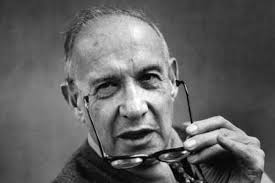
Decision making is a vital part of any organization, and even of the daily life of people. Decisions that are made at any level can have good or bad outcomes, but is making effective decisions an “art” or a “science”?
In other words, is there a specific approach that decision makers should follow in order to guarantee (or at least highly increase the chances of) success, or should creativity be the most important element?
I believe that in most situations strategy and logic alone are nor enough to make good decisions. Creativity is also needed to produce a range of possible solutions. Options ‘outside the box’ may need to be explored before finalizing a decision. Although the “science” of decision making helps to analyze correctly the information available, it is also important to allow creativity to be part of the decision making process.
Peter Drucker’s famous 1967 article on decision making in The Harvard Business Review gives us some great insight on the logic and strategy behind decision making but it also includes elements of its “art”.
Less is More
First, we should focus on what is most important:
“Effective people do not make a great many decisions. They concentrate on the important ones. They try to think through what is strategic and generic, rather than “solve problems.” They try to make the few important decisions on the highest level of conceptual understanding. They try to find the constants in a situation. They are, therefore, not overly impressed by speed in decision-making.” –Peter F. Drucker
Degenerated into Work
Second, we need to remember that the most time consuming step of a decision is its implementation:
“Effective people know … that the most time-consuming step in the process is not making the decision but putting it into effect. Unless a decision has “degenerated into work,” it is not a decision; it is at best a good intention. This means that, while the effective decision itself is based on the highest level of conceptual understanding, the action to carry it out should be as close as possible to the working level and as simple as possible.” –Peter F. Drucker
THE ELEMENTS OF DECISION MAKING

Every decision is a risk-taking judgment, but Peter Drucker believes that by following a sequence of steps, the decision maker will be more successful.
Sequential Steps
1. The first questions the effective decision-maker asks are: Is this a generic situation or an exception? Is this something that underlies a great many occurrences? Or is the occurrence a unique event that needs to be dealt with as such? The generic always has to be answered through a rule, a principle. The exceptional can only be handled as such and as it comes.
2. The second major element in the decision process is clear specifications as to what the decision has to accomplish. What are the objectives the decision has to reach? What are the minimum goals it has to attain? What are the conditions it has to satisfy? In science these are known as “boundary conditions.” A decision, to be effective, needs to satisfy the boundary conditions. It needs to be adequate to its purpose.
3. One has to start out with what is right rather than what is acceptable (let alone who is right) precisely because one always has to compromise in the end. But if one does not know what is right to satisfy the specifications and boundary conditions, one cannot distinguish between the right compromise and the wrong compromise—and will end up by making the wrong compromise.
4. Converting the decision into action is the fourth major element in the decision process. While thinking through the boundary conditions is the most difficult step in decision-making, converting the decision into effective action is usually the most time-consuming one. Yet a decision will not become effective unless the action commitments have been built into the decision from the start.
5. Finally, a feedback has to be built into the decision to provide a continual testing, against actual events, of the expectations that underlie the decision. Decisions are made by human beings who are fallible; at their best their works do not last long. Even the best decision has a high probability of being wrong. Even the most effective one eventually becomes obsolete.
Opinions Rather Than Facts
I found this to be one of the most interesting parts of Drucker’s article. Opinions come before facts. Opinions need to be corroborated by testing, but it all starts with opinions, not with facts.
“Most books on decision-making tell the reader: First find the facts. But executives who make effective decisions know that one does not start with facts. One starts with opinions.”
“These are, of course, nothing but untested hypotheses and, as such, worthless unless tested against reality. To determine what is a fact requires first a decision on the criteria of relevance, especially on the appropriate measurement. This is the hinge of the effective decision, and usually its most controversial aspect.”
“The only rigorous method, the only one that enables us to test an opinion against reality, is based on the clear recognition that opinions come first—and that this is the way it should be.
Develop Disagreement
This is another counter-intuitive argument, or at least it was in 1967 …
Decisions of the kind the executive has to make are not made well by acclamation. They are made well only if based on the clash of conflicting views, the dialogue between different points of view, the choice between different judgments. The first rule in decision-making is that one does not make a decision unless there is disagreement.
Since we need creativity in the decision making process:
Above all, disagreement is needed to stimulate the imagination. One does not, to be sure, need imagination to find the right solution to a problem. But then this is of value only in mathematics. In all matters of true uncertainty such as the executive deals with—whether his sphere is political, economic, social, or military—one needs “creative” solutions that create a new situation. And this means that one needs imagination—a new and different way of perceiving and understanding.
The effective decision-maker, therefore, organizes disagreement. This protects him against being taken in by the plausible but false or incomplete. It gives him the alternatives so that he can choose and make a decision, but also so that he is not lost in the fog when his decision proves deficient or wrong in execution. And it forces the imagination—his own and that of his associates. Disagreement converts the plausible into the right and the right into the good decision.
